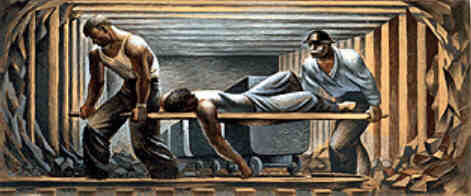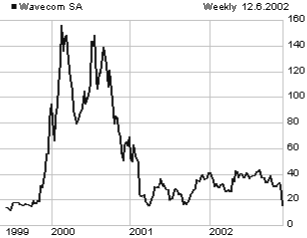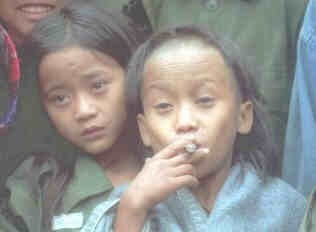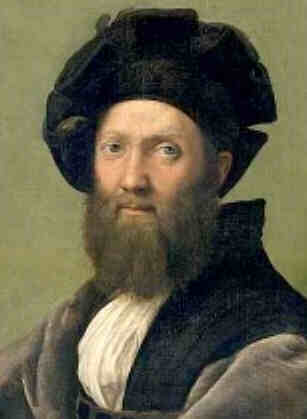Deaths
which occurred on a December 06:
2002
Keyla Guerrero, 17; Josefina Inciarte, 70; Jaime Federico Jirabo Rodríguez;
all three hit in the head by gunfire directed at a crowd of anti-government
demonstrators on Plaza Altamirana in Caracas, 19:15. 18 are wounded.
2002 Ahlam Riziq Kandil, 31; Osama Hassan Tahrawi, 31, and 2 of
his brothers; and 6 other Palestinians; by missile fired from an
Israeli helicopter, as Israeli troops, tanks, and helicopters firing missiles
and machine guns attack the Bureij refugee camp, Gaza Strip, starting at
00:15, seeking Aiman Shasniyeh, a local leader of the Popular Resistance
Committee, believed to be behind a bomb attack on a heavily armored Merkava-3
tank that killed three Israeli soldiers in March 2002. For three hours,
there are gunbattles with Palestinians summoned through mosque loudspeakersp.
They had been celebrating Eid el-Fitr for the end of Ramadan. Kandil was
an elementary school teacher, she died some time after being hit by shrapnel.
Tahrawi was a school attendant. Both were among the 10'000 Palestinian employees
of UNRWA (United
Nations Relief and Works Agency) in the Gaza Strip and the West Bank, where
it runs some 260 schools and 50 clinics serving more than 1.5 million registered
refugees
2001 One employee shot by a disgruntled employee
who then shoots himself, at the Nu-Wood Decorative Millwork simulated
wood factory in Goshen, Indiana. [Gruntled employees never make the news]
2000 Hemayatollah Hamed Akhundzada, executed after being
tortured.
Amnesty International has
condemned the execution of six prisoners in the Afghan province of Panjshir.
The human rights organization has urged Ahmad Shah Masood, whose forces
control the area, to refrain from ordering the execution of anyone in the
territories under his control. The organization also calls on him to ensure
that no one in the custody of his personnel is subjected to torture, and
to provide detailed information on the trial processes. The prisoners were
arrested on the evening of 04 December hours after a United Front Commander
and Governor of Laghman Province, Abdullah Jan Wahedi, was shot dead in
an ambush while on his way to the Panjshir valley. Wahedi's five bodyguards
and another United Front commando were reportedly wounded in the ambush.
Ahmad Shah Masood's administration has claimed that the prisoners were tried
by a court before they were executed. However, it has provided no information
about the nature of their trial. At least one of the prisoners had reportedly
been severely tortured : the family of Hemayatollah Hamed Akhundzada claim
they saw his nails had been pulled out, and there were signs of violence
on the rest of his body when he was being buried. Information on the treatment
of the others is not available.” The circumstances of the men=s alleged
trial and their execution raise serious concerns," Amnesty International
said. First, they were executed hastily within 40 hours of their arrest.
If a trial did take place in such a short period of time, the prisoners
are likely to have been deprived of the right to adequate time and facilities
to prepare a defense.
2000 Enrique Anderson Imbert,
escritor argentino.
1992 First of some 2500 killed
in riots after destruction of Mosque in India
Religious tension between India's majority
Hindu and minority Muslim population reaches a breaking point when
Hindu extremists destroy a mosque in Ayodhya in the northern state
of Uttar Pradesh. The Ayodhya mosque, allegedly built on the site
of a former Hindu temple, was at the center of the campaign by the
Bharatiya Janata Party (BJP), a nationalist Hindu party, to challenge
the secular tradition of Indian politics and to enshrine Hinduism
as a virtual state religion. To the apprehension of India's one hundred
million Muslims, the BJP experienced rapid growth in Indian politics
in the late 1980s and early 1990s, thanks in part to the publicity
surrounding the Ayodhya mosque campaign. The demolition of the Ayodhya
mosque by Hindu extremists sets off deadly riots across India, resulting
in the deaths of some 2500 people. |
1989 Fourteen women and one man who shot them and them himself,
at University of Montreal, killed by one man, worst Canadian mass murder
1987 Boy bludgeoned to death by 3 satanist Missouri teenagers,
just for "fun"
1984 A hostage, killed by hijackers aboard
Kuwaiti jetliner. He is their 2nd victim.
1983 Six Israelis,
by a bomb planted on a bus in Jerusalem
1982: 11 soldiers
and 6 civilians die by bomb planted by Irish National Liberation
Army exploded in a pub in Ballykelly, Northern Ireland
1959 Erdard
Schmidt, mathematician.
1952 Some 500 persons in London, choked on the second day of the
Great Killer Fog. As it blocks sunlight and the temperature drops,
people put more coal on their home fires, the smoke worsening the fog.
1952 Some 500 choked by the
Great Killer Smog in London.
^top^
With weather colder
than usual a fog had formed on 05 October over London under a stagnant
inversion, and loaded by coal smoke and other pollutants had thickened
by evening reducing the visibility to a few meters.
During the day of 06 October, the sun
was too low in the sky to make much of an impression on the fog. That
night and the following two, the fog again thickened. In many parts
of London, it was impossible at night for pedestrians to find their
way, even in familiar districts. In the Isle of Dogs, the visibility
was at times nil. The fog there was so thick that people could not
see their own feet! Even in the drier thoroughfares of central London,
the fog was exceptionally thick. Not until 09 December did it clear.
In central London, the visibility remained below 500 meters continuously
for 114 hours and below 50 meters continuously for 48 hours. At Heathrow
Airport, visibility remained below 10 meters for almost 48 hours from
the morning of 06 December.
Worse than the minimal visibility
is the effect on the lungs, people feel like they are breathing a
poisonous gas. Some 500 persons die as a direct consequence of the
smog on this its first full day. |
1943 Ricardo León y Román, escritor español.
— [Il écrivait des romans?]
1942
Louis Marie de Schryver, French artist born on
12 October 1862.
1939 Day 7 of Winter War: USSR
aggression against Finland. [Talvisodan
7. päivä]
More deaths due to Stalin's desire to grab Finnish territory.
Helsinki: Foreign Minister Väinö Tanner hosts an Independence
Day reception for the diplomatic corps in the banqueting hall of the
Kämp Hotel. Kiviniemi: the last part of the covering force in
front of the main defensive position on the Isthmus pulls back to
the north of Vuoksi.The work of the covering force comes to an end.
Eastern Isthmus: fighting begins at Taipale. A Soviet division
launches an attack across the River Taipaleenjoki. By nightfall a
Russian battalion has crossed River Taipaleenjoki at Koukkuniemi.
Ladoga Karelia: General Headquarters forms Group Talvela to cover
the Tolvajärvi-Ägläjärvi sector. Sweden: 80 leading public figures
call on the country to help Finland. |
1917: 1654 die in munitions
ship explosion in Halifax harbor.
At 09:05, in the harbor of Halifax in the Canadian province of Nova
Scotia, the most devastating man-made explosion in the pre-nuclear
age occurs when the Mont Blanc, a French munitions ship,
explodes twenty minutes after colliding with another vessel. As World
War I raged in Europe, the port city of Halifax bustled with the movement
of ships carrying troops, relief supplies, and munitions across the
Atlantic Ocean.
On the morning
of December 6, the Belgium steamship Imo left its mooring
in Halifax harbor, bound for New York City. At the same time, the
French freighter Mont Blanc, its cargo holds packed with
highly explosive munitions--2300 tons of picric acid, 200 tons of
TNT, thirty-five tons of high octane gasoline, and ten tons of gun
cotton--was forging through the harbor's narrows to join a military
convoy that would escort it across the Atlantic.
At approximately 08:45 the two ships collide, setting the picric acid
ablaze. The Mont Blanc is propelled towards the shore and
the crew rapidly abandons ship, attempting without success to alert
the harbor of the peril of the burning ship. Spectators gathered along
the waterfront to witness the spectacle of the blazing ship, and minutes
later it brushed by a harbor pier, setting it ablaze. The Halifax
Fire Department responds quickly, and is positioning its engine up
to the nearest hydrant when the Mont Blanc explodes at 09:05
in a blinding white flash. The massive blast kills 1654 people, injures
over 8000, and destroys almost the entire north-end of the city of
Halifax. Windows 60 km away are shattered and the sound of the explosion
can be heard hundreds of kilometers away. |
1910 Vittorio Avondo, Italian artist born on 10 August
1836.
 1907:
361 in mine explosion in Monongah WV 1907:
361 in mine explosion in Monongah WV
In West Virginia's Marion County, an explosion at a mine owned by
the Fairmont Coal Company in Monongah kills 361 coal miners. It is
the worst mining disaster in American history.
In 1883, the creation of the Norfolk and Western Railway opened a
gateway to the untapped coalfields of southwestern West Virginia.
New towns sprung up in the region virtually overnight as European
immigrants and African-Americans from the south rushed into southern
West Virginia in pursuit of the economic opportunities of the new
industry.
By the late nineteenth
century, West Virginia, now a national leader in the production of
coal, fell far behind other major coal-producing states in regulating
mining conditions. In addition to the poor economic conditions, West
Virginia had a higher mine death rate than any other state in the
late eighteenth and early nineteenth century.
The Monongah disaster of 1907 came only eleven months after a disaster
in Stuart, West Virginia, claimed the lives of eighty-four miners.
West Virginia was also far behind other states in the development
of labor unions. In 1902, after several unsuccessful efforts, the
United Mine Workers of America (UMWA) finally achieved some recognition
in West Virginia, although it would take several more decades of protests
and violence before the UMWA finally was able to force noticeable
improvements to the poor working conditions in West Virginia's coal
mines. |
1893 Wolf,
mathematician.
1892 Ernst Werner von Siemens, ingeniero
e industrial alemán.
1889 Jefferson Davis, first
and only President of Confederate States of America (1861-5)
1884
Jean Baptiste van Moer, Belgian artist born on 17 December 1819.
1873 Manuel
Acuña, poeta mexicano.
1865 Sebastián Iradier,
compositor español.
1852 George Duncan Beechey,
British artist born in 1798. — Relative? of Sir
William Beechey [1753-1839]?
1835 Ignacio Alonso Zapatero,
guerrillero y militar español.
1823 Edmundo Samuel Castaing,
envenenador francés.
1810 John Francis Rigaud, British
painter born in 1742. —
LINKS
1791 Christian
Georg Schüz (or Schütz) I, German artist born on 27 September
1718.
1779 Jean-Baptiste-Siméon Chardin,
French painter specialized in still life, born on 02 November 1699. —
MORE
ON CHARDIN AT ART “4” DECEMBER —
LINKS
— Bubbles
— The
Buffet — The
Ray — The
Silver Tureen — A
"Lean Diet" with Cooking Utensils — The
House of Cards — another The
House of Cards — The
Draftsman — Still-Life
with Pipe and Jug — The
Attentive Nurse
1749 La Verendrye,
64, French-Canadian explorer
In the midst of planning another expedition to search for the elusive
Northwest Passage, French-Canadian explorer La Verendrye dies in Montréal,
Canada. Born in 1685 in the small frontier town of Trois-Rivières,
New France (now the Canadian province of Québec), La Verendrye
exhibited an adventurous spirit from an early age. When he was only
12 years old, he joined in the French-Indian raid on Deerfield, Massachusetts,
and then sailed across the Atlantic to fight for France in the War
of the Spanish Succession. After spending time as a soldier, he returned
to New France, and in 1726, he became a fur trader in the frontier
region north of Lake Superior.
Native Americans in the area told La Verendrye stories of a great
river that flowed out of the West-they were speaking of the river
we now know as the Missouri. None of the Native Americans had ever
followed the river all the way to the headwaters, but they heard it
led to a giant western ocean. La Verendrye realized that if the stories
were true, the river could be the hoped-for Northwest Passage to the
Pacific.
La Verendrye's exploration
was motivated by a desire to discover the secrets of the West, and
a financial interest in discovering new sources of furs. He and his
sons built up a string of trading posts that probed deep into the
unknown western territories. In 1738, armed with several crude maps--given
to him by Indians--that supposedly showed the all-water route to the
"western sea," La Verendrye reached the Mandan Indian villages along
the Missouri River in present-day North Dakota, some sixty years before
Lewis and Clark reached the same area. From this base, two of his
sons continued westward; it is possible they may have traveled far
enough into Montana and Wyoming to see the massive Rocky Mountains
in the distance.
Unfortunately,
La Verendrye and his sons never found the elusive Northwest Passage,
and their failure earned them only scorn from the French authorities
in Montreal. This derision was perhaps unfair, since Lewis and Clark
discovered in 1805 that the passage for which La Verendrye had been
searching did not actually exist, and La Verendrye did deserve credit
for opening new areas to French fur traders. Without his exploration,
those areas likely would have been claimed by British competitors.
At entirely his own expense, La Verendrye pushed farther into the
West than any other Frenchman, at least temporarily strengthening
French political claims in North America. Despite the poor treatment
he received from French leaders, La Verendrye remained determined
to find the coveted path to the western sea. |
1658 Baltasar
Gracián, escritor español.
1562 Jan van Scorel,
Dutch painter born on 01 August 1495 — MORE
ON VAN SCOREL AT ART “4” DECEMBER
—
LINKS — Joris
van Egmond, Bishop of Utrecht — Landscape
with Bathsheba — Mary
Magdalen _ Mary
Magdalen — Portrait
of a Man (1529)
1504 Pasqualino di Niccolo da Venezia
(Veneto), Italian artist.
1300 San Pedro Nicolás Pascual,
santo español. |
 On
a December 06:
On
a December 06:  2000
Mei Xiang ("beautiful fragrance"), 2, and Tian Tian ("more and more"),
3 [photo >], giant pandas (respectively female and male),
arrive at the National Zoo in Washington for a 10-year stay. The Chinese
government loaned the pandas in exchange for a $10 million donation to promote
panda conservation in China. Only about 1000 pandas remain in the wild,
mostly in western and central China. Five other pandas live in US zoos --
two in Atlanta and three in San Diego.
2000
Mei Xiang ("beautiful fragrance"), 2, and Tian Tian ("more and more"),
3 [photo >], giant pandas (respectively female and male),
arrive at the National Zoo in Washington for a 10-year stay. The Chinese
government loaned the pandas in exchange for a $10 million donation to promote
panda conservation in China. Only about 1000 pandas remain in the wild,
mostly in western and central China. Five other pandas live in US zoos --
two in Atlanta and three in San Diego.  1999
Twin boy Myanmar guerrilla leaders give interview. [< photo]
Johnny Htoo, left, a 12-year old Karen boy watches as his twin brother Luther
smokes a Myanmar cigar during a meeting with The Associated Press at their
jungle base of Ka Mar Pa Law in Myanmar, opposite Thailand's Ratchaburi
province, 95 km west of Bangkok, 06 December 1999. Johnny and Luther, the
twin adolescent leaders of a mystical Myanmar rebel group, and 14 followers
would surrender to Thai authorities on 16 January 2001.
1999
Twin boy Myanmar guerrilla leaders give interview. [< photo]
Johnny Htoo, left, a 12-year old Karen boy watches as his twin brother Luther
smokes a Myanmar cigar during a meeting with The Associated Press at their
jungle base of Ka Mar Pa Law in Myanmar, opposite Thailand's Ratchaburi
province, 95 km west of Bangkok, 06 December 1999. Johnny and Luther, the
twin adolescent leaders of a mystical Myanmar rebel group, and 14 followers
would surrender to Thai authorities on 16 January 2001. 1907:
361 in mine explosion in Monongah WV
1907:
361 in mine explosion in Monongah WV 1478
1478